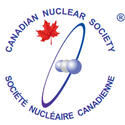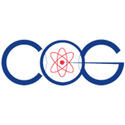

Overview
L3Harris’ advanced reactor and thermal-hydraulic models unlock maximum fidelity and performance from your simulator. The models are based on first principles and advanced numerical techniques, and are extensively proven with installations worldwide.
Advanced Reactor Kinetics Models
Comet™ and Comet Plus™ are advanced models for the simulation of reactor neutron kinetics based on a rigorous application of first principle physics and advanced numerical techniques.
Comet™ and Comet Plus™ are advanced models for the simulation of reactor neutron kinetics based on a rigorous application of first principle physics and advanced numerical techniques.
Advanced Steam Supply Model
L3Harris' advanced thermal-hydraulic model (ANTHEM™) is based on a rigorous application of the equations of mass, momentum, and energy conservation and implicit numerical techniques.
L3Harris' advanced thermal-hydraulic model (ANTHEM™) is based on a rigorous application of the equations of mass, momentum, and energy conservation and implicit numerical techniques.

Power Systems Resources
View the ResourcesRelated Solutions

Certifications | L3Harris Montreal, Canada
LEARN MOREAffiliations










Related News

Editorial | 11. 19. 2025
Cracking the Code for Resilient, Secure Space-based Communications
L3Harris has achieved NSA Cybersecurity Directorate certification for its KSV-650. The certification represents the culmination of a multi-year development program as part of the Protected Tactical SATCOM (PTS) Space Hub Integrated Cryptographic Unit-Leading-Edge Development (SHIELD) program and continues L3Harris’ legacy of leadership in advancing secure communication technologies and protecting the nation from emerging cyber threats.
Contact Us

Related Domains & Industries
Solutions that solve our customers' toughest challenges.
view all capabilities














